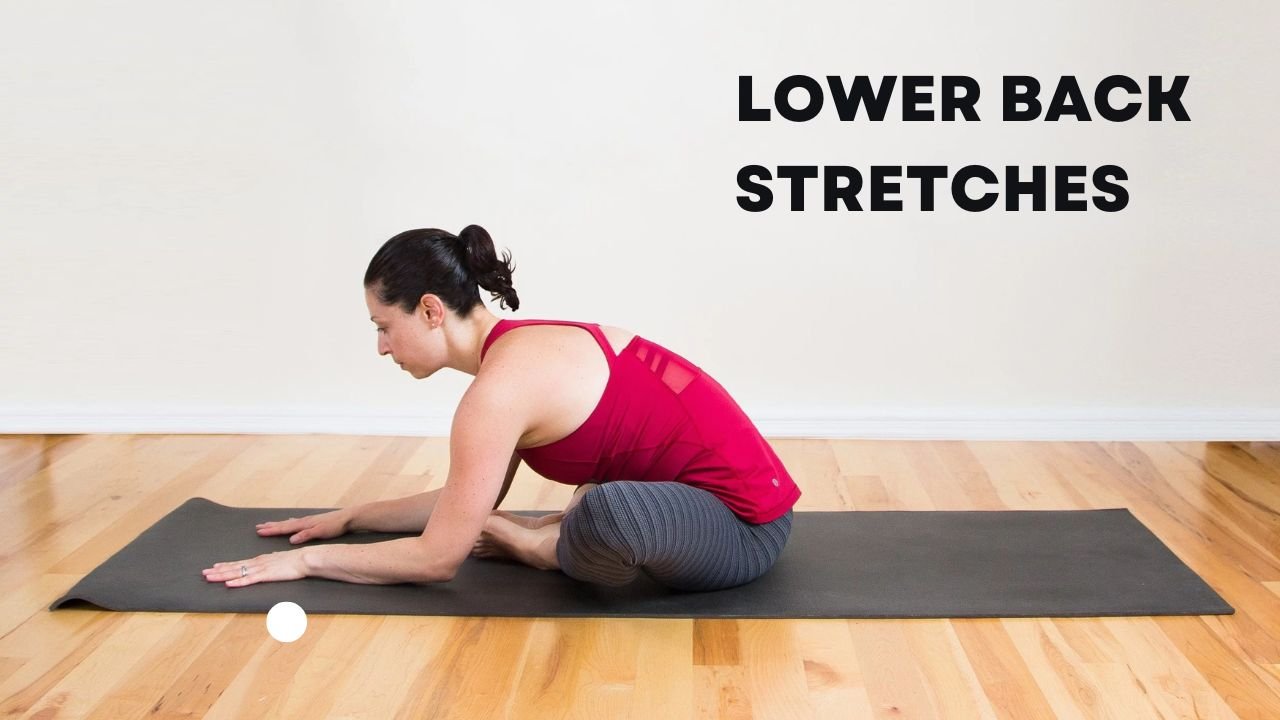Lower back pain can affect anyone. It’s often caused by tight muscles or poor posture. One of the most useful things you can do with it is daily lower back stretches with some simple, gentle, and very effective exercises. These enhance mobility and ease pain. You don’t need equipment, only space and time.
The key is to be consistent. A few minutes of stretching can help your back stay loose and pain-free. Let’s look at the most helpful lower back pain stretches that target different areas and give real results.
Let’s discuss the lower back stretches below before diving into the routines
1. Child’s Pose: Calm the Spine and Hips
Child’s pose is a basic move that relaxes the spine. It softly focuses on the hips, thighs and lower back. The pose forms a major part of yoga as it relaxes the body as well as mind. When practiced correctly, it relieves stress and assists in alleviating backaches in the lower part of the body.
To begin with, you need to be on your knees with outstretched legs. Extend your hands and drop your forehead down on the floor. Stretch to a count of 60 seconds by breathing deeply. In this pose, the gluteus maximus muscles and the back muscles are stretched and the natural shape of the spine is facilitated.
The best part is to take this pose in the beginning or the end of your exercise. It is advisable to repeat them several times daily to keep the flexibility of lower back.
Adjustments: Use a cushion under the knees or thighs for added support
Focus Areas: Hips, Spine
Recommended Hold: 30–60 seconds
2. Piriformis Stretch: Release Deep Glute Tension
The piriformis muscle lies deep within the buttocks. When tight, it can cause pain in the hips and lower back. The piriformis stretch directly targets this area. It’s one of the most effective lower back stretches for people who sit for long hours.
Lie on your back and bend both knees. Place one ankle across the opposite thigh. Pull the bottom thigh gently toward your chest. Hold this for up to 60 seconds. This motion relieves tightness in the buttocks and can help reduce pressure on the sciatic nerve. It’s a reliable choice among stretches for pain of lower back.
Adjustments: Keep the bottom foot flat or use a towel to assist.
Focus Areas: Glutes, Lower Back
Recommended Hold: 30–60 seconds
3. Pelvic Tilt: Strengthen Core and Ease Pressure
Pelvic tilts help engage your core muscles. They are very helpful for stabilizing your spine. This stretch not only strengthens the lower back but also tones your abdomen and glutes. It’s often used in physical therapy for managing chronic back issues.
To start, lie on your back with knees bent. Flatten your back against the ground by tightening your core. Hold for 10 seconds, then relax. Repeat this five times and slowly build to three sets. This motion supports your spine and helps prevent future pain. Among all lower back pain stretches, this one is best for building long-term support.
Adjustments: Reduce hold time to 5 seconds if needed.
Focus Areas: Core, Spine
Recommended Hold: 5 reps, 10 sec hold
4. Sphinx Stretch: Gentle Extension for the Spine
The Sphinx Stretch is a soft backbend that provides a safe stretch for your lower back. It’s ideal for beginners or those with stiffness. This movement is perfect for opening the front of the body while engaging the back.
Lie on your stomach. Place your elbows directly under your shoulders and press your forearms into the floor. Lift your chest and gaze ahead. Keep your hips on the ground. Hold for up to a minute while breathing slowly. This helps loosen tight lower back muscles and improves posture. It’s often included in routines focusing on lower back stretches and spinal mobility.
Adjustments: Adjust elbow position for less intensity
Focus Areas: Lower Spine, Chest
Recommended Hold: 30–60 seconds
5. Knee-to-Chest Stretch: Loosen Glutes and Reduce Pressure
Knee-to-chest is one of the easiest stretches for lower back pain. It’s gentle and relaxing. It targets the glutes, thighs, and hamstrings, all of which can cause back discomfort when tight.
To do this, lie on your back. Pull one knee up to your chest. Keep the other leg flat or bent, depending on comfort. Hold for 30 to 60 seconds, then switch legs. This position helps lengthen the lower spine and can release tension after a long day of sitting or standing. Including this in your lower back stretches routine gives quick relief.
Adjustments: Use a towel or cushion behind the head
Focus Areas: Glutes, Hamstrings
Recommended Hold: 30–60 seconds
Stretching Tips for Safe Practice
Stretching should always feel gentle. Avoid any movement that causes pain. Keep your breathing steady and never hold your breath. Good breathing helps your muscles relax and improves stretch quality.
Start with short hold times. Build up slowly. Never bounce into a stretch. Instead, ease into the movement and hold it calmly. Stretching once or twice a day is enough for most people. If you feel sore, give your body a break. Lower back stretches work best when done consistently, not forcefully.
Know When to Pause or Seek Help
Sometimes stretching isn’t enough. If your pain increases or becomes sharp, stop and consult a healthcare provider. Also, if your back pain is from a recent injury or accident, get medical advice first.
Certain medical conditions need more than stretches. These may include medication, imaging tests, or physical therapy. Remember, these movements help mild to moderate discomfort, not serious back issues. Stretches for lower back pain work best as part of a bigger recovery plan.



